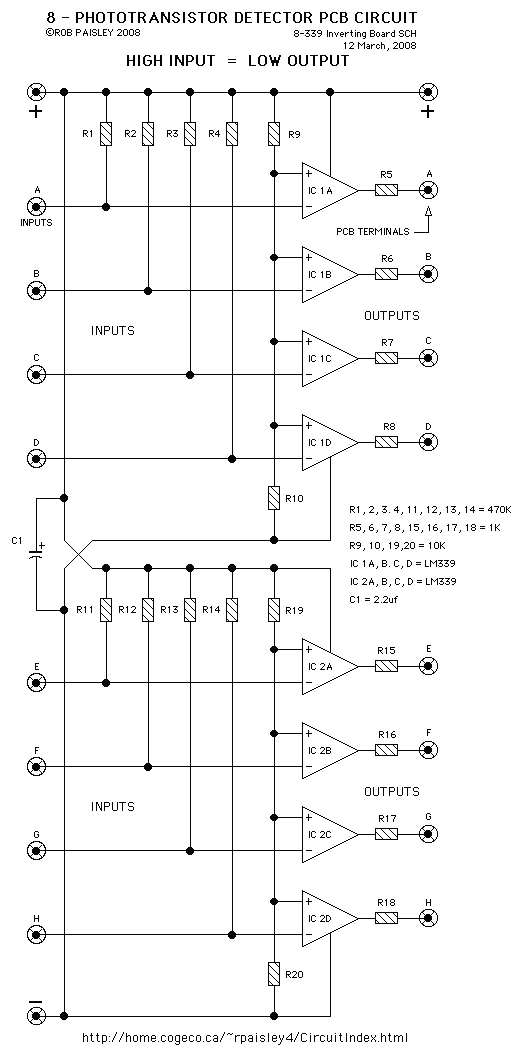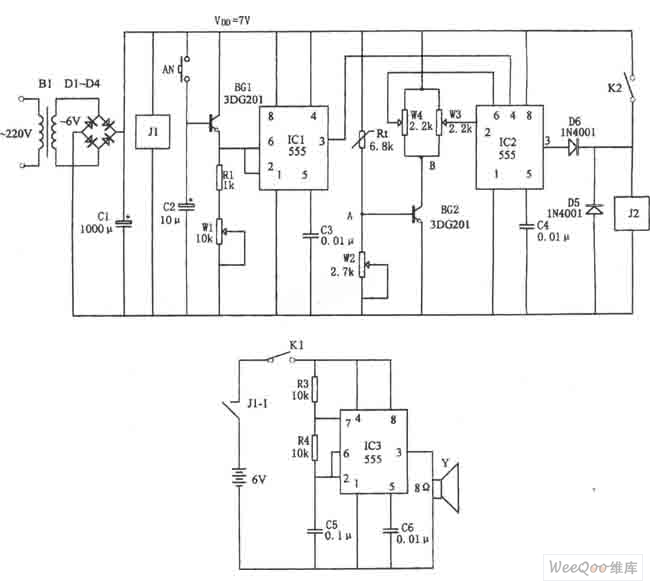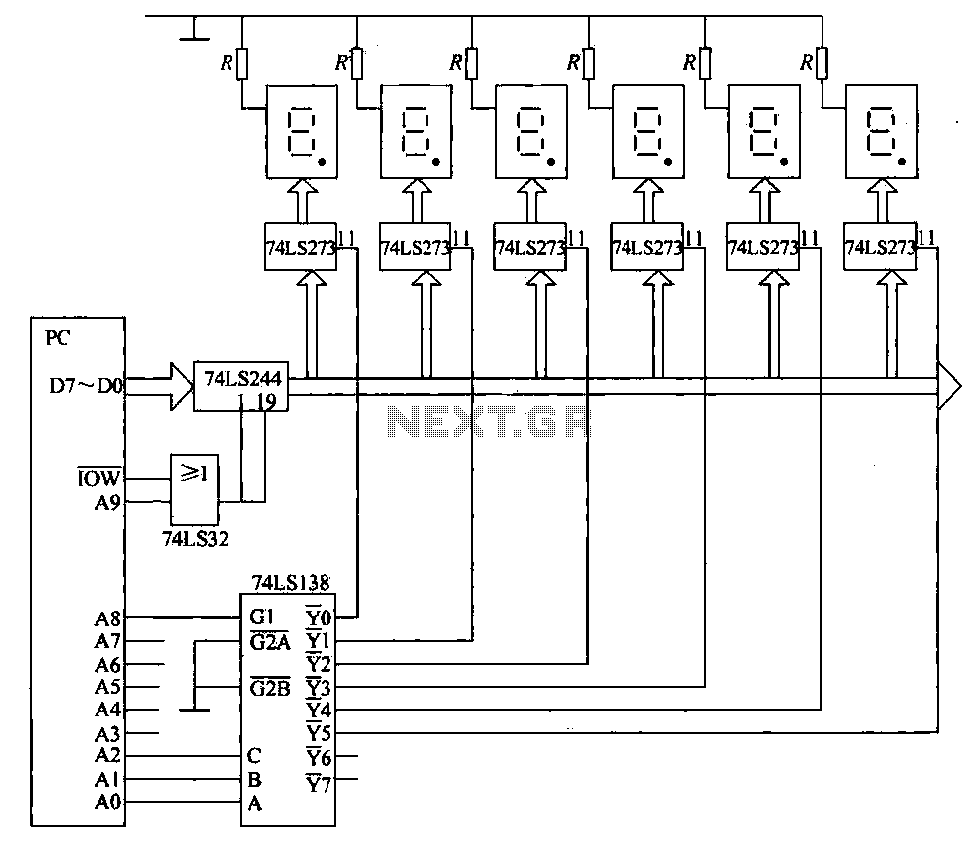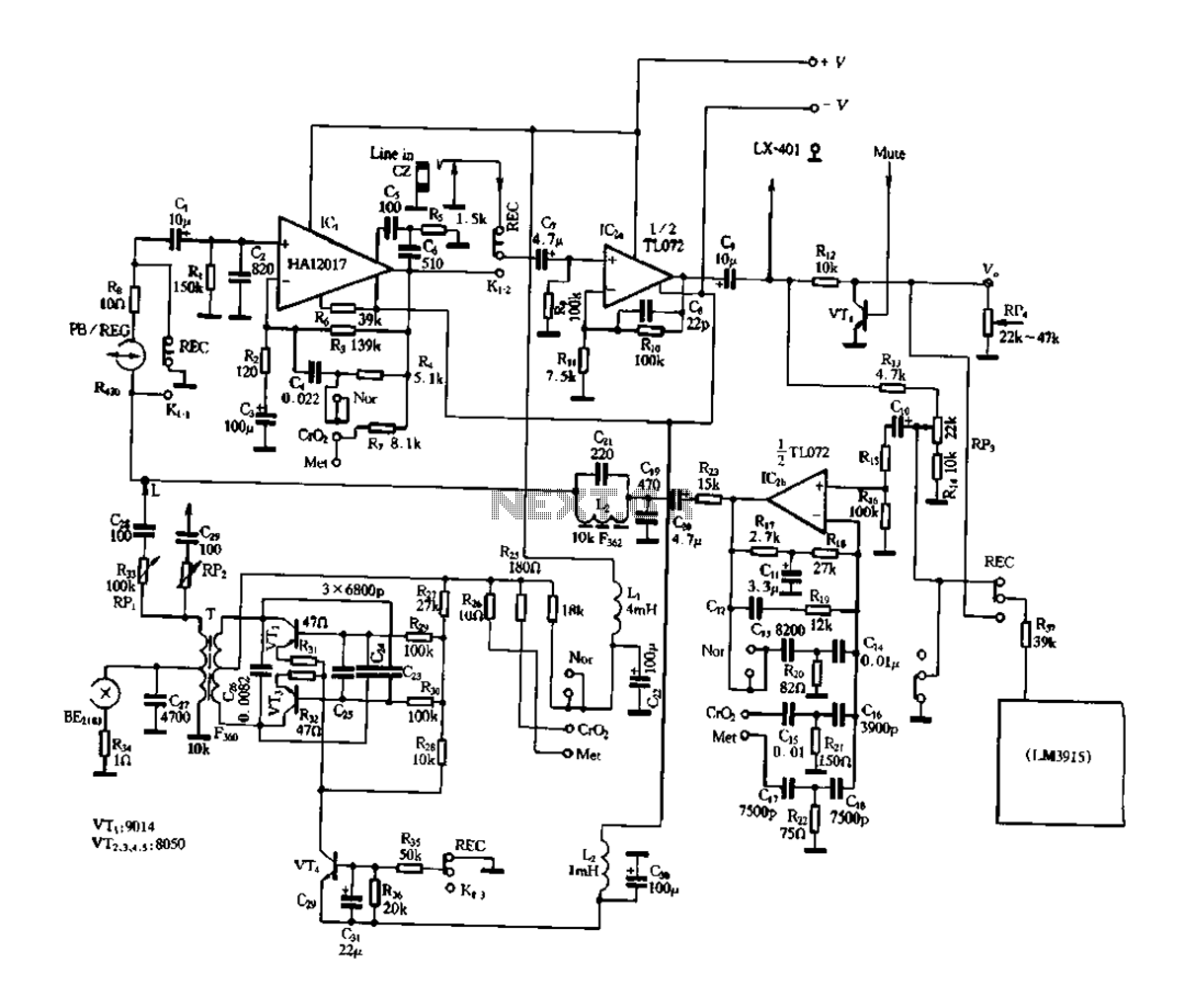
circuit ultrasonic mosquito

This is a small circuit designed as an insect repellent, targeting mosquitoes and birds by producing high-frequency audio signals. These signals interfere with the hearing of insects, making it unbearable for them, causing them to flee. The operation of this circuit utilizes an IC, specifically the 4047, which generates the necessary frequency. Mosquitoes tend to swarm during the summer months, creating discomfort through swelling and itching. The challenge of dealing with mosquitoes has been a concern for many over time, as inventive individuals have sought effective protection against these pests. While only female mosquitoes pose a threat, male mosquitoes can also induce panic with their buzzing sounds. The ultrasonic pest repeller circuit operates effectively within a frequency range of 30 kHz to 50 kHz, which is known to repel various pests, including rats and mice. Humans cannot perceive these high-frequency sounds; however, it is important to note that different pests respond to different ultrasonic frequencies. For instance, some pests may be repelled at 35 kHz, while others may require frequencies between 38 kHz and 40 kHz for effective deterrence.
The insect repellent circuit employs the 4047 integrated circuit, which is a versatile astable multivibrator capable of generating square wave signals at adjustable frequencies. The frequency output can be altered by changing the resistor and capacitor values connected to the IC, allowing for fine-tuning based on the specific pest being targeted. The circuit typically includes a power supply section, often utilizing a battery or a DC power source, which powers the 4047 and the associated components.
To enhance the efficacy of the ultrasonic signals, a piezoelectric speaker or transducer is commonly used as the output device. This component converts the electrical signals generated by the 4047 into ultrasonic sound waves, which propagate through the air to create a repellent field. The design may also incorporate a variable resistor or potentiometer, allowing users to adjust the output frequency to optimize performance against different types of pests.
In addition to the primary components, the circuit may include filtering capacitors to stabilize the power supply and prevent noise interference, ensuring that the ultrasonic signals are emitted at the desired frequency without distortion. A small LED indicator can also be integrated to provide a visual cue that the circuit is operational.
Overall, this ultrasonic insect repellent circuit represents an innovative solution to pest control, leveraging high-frequency sound waves that are inaudible to humans but effectively disrupt the behavior of unwanted insects and rodents. The adaptability of the circuit allows users to customize it for various applications, making it a practical choice for both residential and commercial pest management.This is a small circuit insect repellent, mosquitoes and birds, or other methods to produce high frequency audio signals. Interfere with the hearing of insects. Make it insufferable, wings to escape in the end. Operation of this circuit is used IC1 number 4047. A duty to produce frequency. MOSQUITO REPELLANT They will be swarming once again, the unwanted, winged torturers, looking for the victims
and leaving behind swelling and itch! The mosquito problem is a part of everyday life, espacially during the summer. Since the immemorial, inventive people have struggled hard to find effective means of protection against these insects. Even though it is a fact that only the females are dangerous, the males can also create situations of panic by their humming.
Ultrasonic Pest repeller circuit It is well know that pests like rats, mice etc are repelled by ultrasonic frequency in the range of 30 kHz to 50 kHz. Human beings can`t hear these high-frequency sounds. Unfortunately, all pests do not react at the same ultrasonic frequency. While some pests get repelled at 35 kHz, some others get repelled at 38 to 40 kHz 🔗 External reference
The insect repellent circuit employs the 4047 integrated circuit, which is a versatile astable multivibrator capable of generating square wave signals at adjustable frequencies. The frequency output can be altered by changing the resistor and capacitor values connected to the IC, allowing for fine-tuning based on the specific pest being targeted. The circuit typically includes a power supply section, often utilizing a battery or a DC power source, which powers the 4047 and the associated components.
To enhance the efficacy of the ultrasonic signals, a piezoelectric speaker or transducer is commonly used as the output device. This component converts the electrical signals generated by the 4047 into ultrasonic sound waves, which propagate through the air to create a repellent field. The design may also incorporate a variable resistor or potentiometer, allowing users to adjust the output frequency to optimize performance against different types of pests.
In addition to the primary components, the circuit may include filtering capacitors to stabilize the power supply and prevent noise interference, ensuring that the ultrasonic signals are emitted at the desired frequency without distortion. A small LED indicator can also be integrated to provide a visual cue that the circuit is operational.
Overall, this ultrasonic insect repellent circuit represents an innovative solution to pest control, leveraging high-frequency sound waves that are inaudible to humans but effectively disrupt the behavior of unwanted insects and rodents. The adaptability of the circuit allows users to customize it for various applications, making it a practical choice for both residential and commercial pest management.This is a small circuit insect repellent, mosquitoes and birds, or other methods to produce high frequency audio signals. Interfere with the hearing of insects. Make it insufferable, wings to escape in the end. Operation of this circuit is used IC1 number 4047. A duty to produce frequency. MOSQUITO REPELLANT They will be swarming once again, the unwanted, winged torturers, looking for the victims
and leaving behind swelling and itch! The mosquito problem is a part of everyday life, espacially during the summer. Since the immemorial, inventive people have struggled hard to find effective means of protection against these insects. Even though it is a fact that only the females are dangerous, the males can also create situations of panic by their humming.
Ultrasonic Pest repeller circuit It is well know that pests like rats, mice etc are repelled by ultrasonic frequency in the range of 30 kHz to 50 kHz. Human beings can`t hear these high-frequency sounds. Unfortunately, all pests do not react at the same ultrasonic frequency. While some pests get repelled at 35 kHz, some others get repelled at 38 to 40 kHz 🔗 External reference





